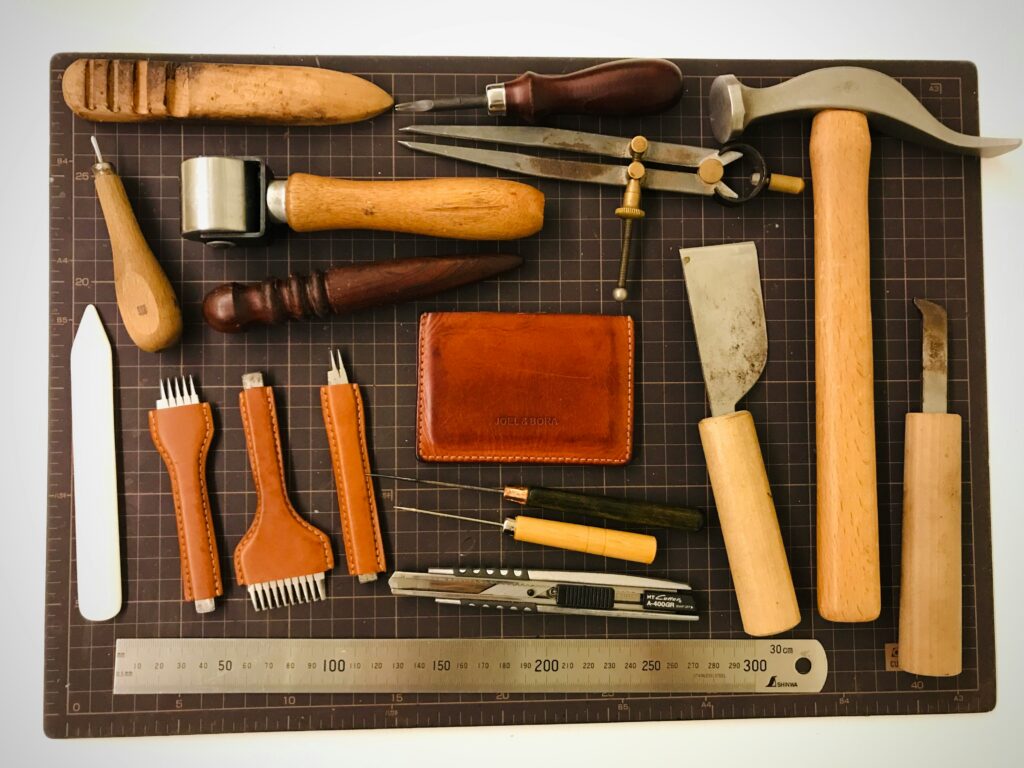LeatherWorking Tools for Beginners: Essential Tools for Your First Project


Leatherworking can seem like a daunting craft when you’re just starting, but with the right tools, you can create beautiful, durable items. Whether you’re interested in making leather bags, wallets, or custom accessories, having the right leather working tools is essential for a smooth and enjoyable experience. This guide will walk you through the must-have tools every beginner should have in their leatherworking toolkit. These tools will help you get started and ensure that your first project is a success.
Basic Leatherworking Tools You Need to Get Started
When you first step into the world of leatherworking, it’s tempting to buy every tool you see. However, you don’t need a lot to start. A few key tools will allow you to create a variety of projects and build your skills over time.
One of the first tools you’ll need is a sharp utility knife. A utility knife allows you to cut leather precisely and with ease. When selecting a knife, look for one that feels comfortable in your hand and offers replaceable blades, which are essential for maintaining sharp edges. Another vital tool is cutting mats, which protect your work surface and ensure that you cut straight lines without damaging your materials. The cutting mat also provides a non-slip surface, making it safer to work on.
Essential Leather Crafting Tools for Precision and Accuracy
Once you have your cutting tools, you’ll want to focus on tools that allow for precision and fine details. Rulers and right-angle rulers are crucial for creating straight lines and accurate measurements on your leather. They help in cutting uniform pieces, which is essential for consistency in your projects.
In addition to rulers, leather hole punch sets are vital for adding rivets, snaps, or laces to your projects. These sets typically come with multiple sizes of punches, allowing you to create different-sized holes for various hardware. A good quality hole punch should fit comfortably in your hand and make clean, crisp holes. A pricking iron or stitching chisels also play an essential role in leatherworking. These tools allow you to create evenly spaced holes for hand stitching, ensuring a neat and professional finish.
Tools for Stitching and Finishing Your Projects
Stitching is a key part of leatherworking, and to do it properly, you’ll need a few tools designed specifically for this purpose. Leather needles are stronger than regular sewing needles and come in various sizes. They are designed to handle the rigid material of leather without bending or breaking. Additionally, waxed thread is commonly used in leatherworking, as it’s durable and holds the stitching in place.
To ensure your stitches are evenly spaced and your project looks polished, you’ll also need a stitching awl. This tool helps you create tiny, precise holes to guide your needle, ensuring a consistent stitch pattern. To finish your project, a bone folder or burnishing tool is essential. These tools help smooth the edges of your leather and give your project a clean, professional look. The burnishing tool is handy for folding edges over or for smoothing the edges of a wallet or bag.
Cutting and Shaping Leather Like a Pro
In addition to cutting straight lines, there are times when you’ll need to shape and carve leather to create more intricate designs. Leathercraft knives are designed for more detailed cutting and carving work. These knives are perfect for creating patterns, designs, or detailed lines on the surface of your leather.
If you plan to add any decoration to your leather, stamps are another tool you may want to invest in. Leather stamps allow you to add texture and design to your projects, making them unique and custom. These stamps come in various shapes and sizes so that you can experiment with different designs. To get clean impressions, it’s essential to use a mallet or maul, as these tools help you apply even pressure without damaging the stamp or leather.
Maintaining Your Leatherworking Tools
Proper care and maintenance of your leatherworking tools can extend their lifespan and ensure they perform well on every project. For example, always keep your cutting blades sharp and replace them when necessary. A dull blade can cause rough edges and make your work harder than it needs to be.
In addition to maintaining your knives and cutters, you should also clean your leatherworking tools regularly. Leather tools, such as pricking irons and stamps, can accumulate residue from the leather and waxed thread. Use a soft cloth to wipe down your tools after every use to keep them in good working order. For tools with wooden handles, it’s also a good idea to oil them occasionally to prevent the wood from drying out and cracking.
Where to Find Leatherworking Tools for Beginners
Now that you know the basic tools needed to start leatherworking, it’s time to think about where to buy them. Many craft stores carry leatherworking tools, but specialized leather supply stores offer higher quality and a wider selection. You can also find leatherworking tools online, which is an excellent option if you’re looking for specific brands or hard-to-find items.
When purchasing tools, keep in mind that quality matters. While it’s tempting to opt for cheaper tools, investing in quality items will make your leatherworking experience much more enjoyable. High-quality tools are not only easier to use, but they also tend to last longer, saving you money in the long run.
Starting leatherworking can seem overwhelming at first, but with the right tools, you’ll be able to tackle your first project with confidence. Focus on getting a sharp utility knife, cutting mat, and hole punch set, and then build your toolkit as you gain more experience. Remember, taking care of your tools and learning how to use them properly will make a massive difference in the quality of your work. So, gather your tools, roll up your sleeves, and enjoy the process of creating beautiful leather items that will last for years to come.
